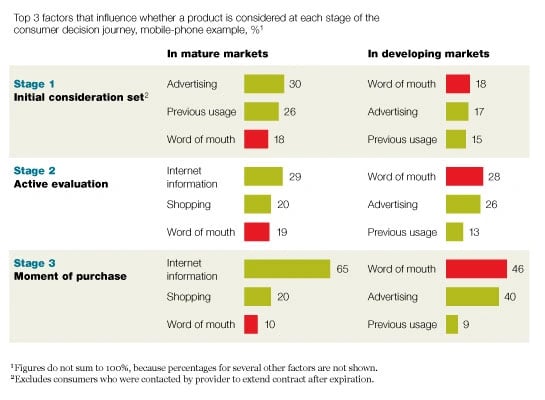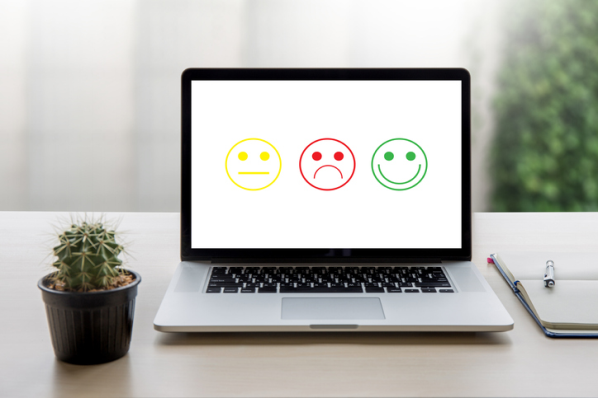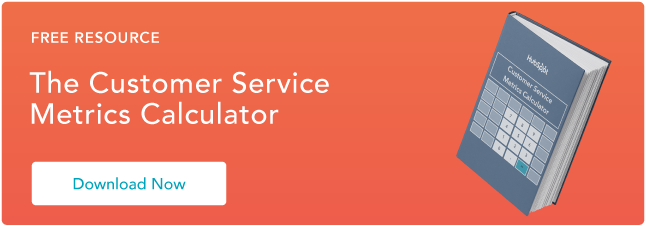"We'll pick you up."
It's a simple four-word value proposition but it helped Enterprise Rent-A-Car grow into the largest rental car company in the world, with over 7,600 locations in 85 countries.
But did you also know the St. Louis-based company had a pivotal role in the creation of a key business metric that's used in nearly every industry today?
→ Download Now: Customer Service Metrics Calculator [Free Tool]
When Andy Taylor, CEO of Enterprise, wanted to track the performance of his stores across the country, he devised a simple method for capturing customer feedback on a periodic basis.
Rather than asking customers to fill out a long survey, Enterprise asked its customers to answer two simple things:
- A question measuring the quality of the rental experience
- A question measuring the likelihood of renting from the company again.
This struck Frederick F. Reichheld, a consultant with Bain & Co. He saw the value of simple data collection and began a process to create a more robust version of the Enterprise metric -- one that would track what he viewed as a key to company success: customer loyalty.
Today, Reichheld's creation, Net Promoter Score Ⓡ (or NPS for short) is a key measurement tool used by businesses at all stages -- from Fortune 500 leaders to small startups trying to grow into the companies of tomorrow.
Why Is NPS Important?
First off, NPS is simple, easy to compare, and acts as a measure of brand performance rather than as feedback on an individual transaction.
More importantly, NPS allows you to find your most loyal customers and use them as the model of who to build your product for. Most companies track NPS regularly, but in this article, you'll learn why it should be a key metric you check on a daily basis.
While you might already have an understanding of NPS, it's important to know a few things about the system before we get started.
What Is NPS?
NPS stands for Net Promoter Score. It's a customer satisfaction benchmark that measures how likely your customers are to recommend you to a friend.
What Is Net Promoter Score Used For?
Businesses use NPS to capture feedback and assess overall customer satisfaction. With its numeric scoring, management can easily calculate their average and see how content their customers are. Additionally, the system's standardize scoring clarifies positive and negative reviews, and the comment section provides further details justifying the respondent's score.
What are the benefits of NPS?
NPS is an attractive customer feedback tool because it's simple and user-friendly. The results it provides are easy to interpret and customer service teams can swiftly distribute the data to marketing, sales, and product development teams.
Many businesses have made NPS the cornerstone of their feedback collection process. And, that's not just because of the benefits it provides to customer service teams. Rather, many businesses invest in NPS because it enhances customer experience over time.
For example, with NPS you can identify your most loyal customers by looking for users who repeatedly record promoter scores. Then, your team can review their comments to see why they love your business so much. Using this information, you can then create loyalty programs to retain these users and increase their customer lifetime value.
How Do You Calculate NPS?
To calculate NPS, you need to follow these steps.
- Survey your customers, asking them "On a scale of 0 to 10, how likely are you to recommend to a friend?"
- Categorize respondents according to their score: Scores 0-6 are Detractors, scores 7-8 are Passives, and scores 9-10 are Promoters.
- Disregarding the Passives, subtract the percentage of Detractor responses from the percentage of Promoter responses to determine your Net Promoter Score. This score can range from -100 to 100.

Source: Wootric
Now that we've broken down the fundamentals of NPS, let's review the reasons why your business should be measuring it every day.
6 Reasons to Measure Net Promoter Score
There are many metrics you should use to assess the daily performance of your business. But one of the most powerful, adaptable, and underrated metrics is Net Promoter Score.
You're likely already tracking NPS. If you're not, I encourage you to start doing so today. And if you are, I implore you to go a step further and track NPS on a daily basis.
Here's why.
1. It aligns your team.
According to a 2017 Gallup study, 67% of US employees reported that they were not engaged or were actively disengaged at their jobs. This is quite the concern for management -- especially executives and managers looking to push their businesses into hyper-growth.
How do you combat this epidemic of lackluster enthusiasm from hitting your company?
Give your team a clear goal and remove all barriers that get in the way of your team reaching that goal. Having a clear focus is important to building both a successful customer success team and a lasting company. When your team is aligned on a common mission, strategy, and quarterly goal, you're more likely to be successful.
For many departments, setting goals is easy. Marketing teams can set ideal CPAs and customer acquisition metrics. Engineering teams can aim for points or products launched. But much of what Customer Success teams do is qualitative.
So, what should you track?
Sure, you can track the number of phone calls dialed, call time, sales, or positive customer ratings, but those measures are individualistic and not reflective of team contributions. They make employees incentivized to compete against each other rather than work towards a common cause.
When you introduce NPS, you can say to your team, you now have one focus: Increasing our NPS.
As a manager, you can ask your employees on a daily basis, "Did you make every customer want to recommend our business to a friend today?"
By making NPS a key metric for your customer-facing teams, you will all be laser-focused on this objective, and they will aim to have customers walk away with a positive experience in every interaction. Your team will work together more closely, they'll encourage each other, and they'll celebrate promoters and do everything they can to reduce detractors.
The result? Sales will increase, customers will churn less frequently, and you'll be on your way to building a long-lasting business with tons of loyal customers.
2. It quantifies word-of-mouth traffic.
One of the most important features of the Net Promoter Score is the ability to measure a segment of your business that is vital for continued growth: word-of-mouth.
Over 92% of consumers report trusting family and friends above all other forms of advertising.
Put simply, that percentage is huge, and worth your time.
Further, word-of-mouth is important at several parts of the buyer's journey -- from consideration to evaluation to purchase -- and it's becoming more important in developing markets.

Source: McKinsey
When you consider that roughly nine out of every 10 visitors to your website are influenced by their network, you should want to optimize towards creating a steady word-of-mouth pipeline -- building refer a friend campaigns, creating positive customer service experiences, and creating elements that make your brand memorable.
 Source: Harry's
Source: Harry's
For instance, consider how Harry's used word-of-mouth to generate 100,000 email signups. Sure, their tool provided tons of referral traffic to their site -- but there was also a boost in people talking about their business organically.
While you can run daily reports on Facebook ads, TV ads, and other paid channels, it's incredibly hard to quantify word-of-mouth traffic. There's no direct word-of-mouth metric to track. And that's where NPS can come in handy.
You can use the metric on a daily basis to gauge your word-of-mouth performance. As you introduce more promoters, your word-of-mouth machine grows. As you introduce detractors, it slows. It's important to note there are other variables at play here, but as a Customer Success Manager, you should be concerned with general trends of your NPS over time.
3. It measures customer loyalty.
66% of US consumers admit to spending more on brands to which they are loyal. So it should be a no-brainer that most founders want to build loyalty into their business models.
But there are two problems with customer loyalty as a performance indicator for a business:
- It's hard to measure.
- It's constantly fluctuating.
How do you measure customer loyalty and control for those challenges? Well, you could measure several data points that reflect success in loyalty efforts:
- Repeat purchases: the number of time a customer returns and purchases a product from your business
- Average order value: how much (on average) a customer spends each time they visit your site or store
- Churn rate: the percentage of your customers or subscribers who cancel or don't renew their subscriptions during a given time period.
You could consider NPS, too.
Measuring NPS on a daily basis will show you the likelihood of your current customers to refer other customers. In short, it gives you a tab on your loyalty performance -- are customers fans, or even better, advocates for your brand?
Let's consider the NPS for two brands that have excelled at building loyalty into their bloodstream: Warby Parker and Southwest Airlines.
First, let's look at Warby Parker. In 2010, four friends at the Wharton Business School launched a glasses startup that broke all the rules. They won their initial customers with a fun, quirky brand that focused on price ($95 frames) and convenience (at home try-on kits).
They've continued to build loyalty with great customer service, new products (including sunglasses and kids frame), and the introduction of brick and mortar stores. Customers love it -- their NPS is extremely high for any industry at 80. They've created a moat, and when it's time to buy glasses, most of their customers return to Warby Parker -- time and time again.
And then consider Southwest Airlines. The brand is laser-focused on customer service. On their site, they even have the motto: "We like to think of ourselves as a customer service company that happens to fly airplanes."
How does Southwest maintain loyalty?
Well first off, they win customers with low fares. Then, they do everything in their ability to keep those fares low and customers happy -- by flying their planes more frequently than competitors, using one plane model in their fleet to minimize delays, and having the lowest turnaround time in the industry: 25 minutes.
Southwest has gone a step further and provides perks to incentivize loyalty to the brand: offering free checked bags, the prized companion pass, and stellar service. It's a strategy that has focused the brand and maintained their profitability -- even when other airlines have had poor performance.
And chances are if you've ever met a Southwest fan, you'll see how hard it is for them to fly with another carrier. Many customers would rather pay more for Southwest because of how much they value the brand. All of their combined efforts have helped give them gain an NPS of 62 and some of the highest ratings in their industry.
 Source: Business Insider
Source: Business Insider
4. It provides a benchmark of customer quality.
Every day at a company stand-up meeting, you have reports from different parts of the business. Every manager is responsible for providing one or two important numbers about the health of their department.
For an example, let's consider a SaaS company. The key SaaS metrics in the team report likely include:
- Monthly recurring revenue
- New trials
- Cost per acquisition
- Customer churn
- Conversion rate
- Ad spend
- NPS
The first six items on the list above are indicators of your revenue, customer acquisition, and profitability. But they provide no measure on the quality of customers. That's why NPS should be included in daily reports -- as a metric for customer quality alongside quantity.
Theoretically, you could spend marketing budget and time without knowing what customers you're getting until months down the line. NPS helps explain if the customers are the right types of customers for your product.
When there's a product-customer fit, you'll see a substantial number of promoters and few detractors. When there's an issue, you face the opposite case.
5. It identifies areas for product improvement.
When you create any product, either digital or physical, collecting customer feedback is imperative. At tech companies, PMs, engineers, and designers are all seeking real-time customer feedback loops.
And while these stakeholders have plenty of tools at their disposal -- Full Story, UserTesting.com, Google Analytics, and Optimizely -- there's one metric that can help identify product improvements on a daily basis.
When you track NPS, you can see the negative side effects of updates, and you can troubleshoot changes with your product in real time. NPS consists of a numerical ranking, but there's also a qualitative question that follows, asking the respondent to assess why they answered the first question.
If there's a product issue that causes them to give you and your business a bad rating, you'll quickly be able to see it in your NPS readout.
Picture this scenario: Our company, Proof, launched a product update that changed the look of our social proof app drastically.
When we did so -- as we do with every product launch -- we closely watched our NPS to see if we saw any drastic change in our numbers. If we went from having a high number of promoters and a low number of detractors to the opposite case, we'd be concerned.
Luckily, we didn't experience any dips. But by measuring NPS, we can see immediate feedback rather than waiting to hear about it through slower channels. After the respondent chooses a number, the NPS survey asks for a reason why they chose the number they did.
You can gather customer responses related to the product and use the data to inform your own product roadmap.
6. It's user-friendly and easy to adopt.
The beauty of NPS is that it's a one-question survey. You're not making customers spend 10 to 20 minutes filling out a questionnaire. Rather, you're only asking them to rank their experience then provide additional commentary if desired.
This quick-and-easy process makes NPS an efficient medium for data collection. It has higher completion rates than traditional surveys and its more cost-effective than conducting focus groups or customer reviews.
And, you can install NPS surveys on your website using most customer feedback software. These tools let you target a point in the customer's journey to trigger an NPS survey. That way, you can get valuable feedback at different stages of the customer's experience.
After reading this post, I hope you can see the power of the Net Promoter Score in tracking your performance with regard to customer loyalty. While NPS is a simple tool, it's incredibly powerful, especially when tracked on a regular basis.
I'm not advocating that NPS should be the only metric you use to assess the performance of your customer success team. But it's a robust metric that's often underutilized by companies.
There's a reason it's trusted by both the biggest companies in the world and startups that have raised millions in venture financing. It's worth exploring for your company as well.
To learn more, read about what makes a good Net Promoter Score next.
Net Promoter, Net Promoter System, Net Promoter Score, NPS and the NPS-related emoticons are registered trademarks of Bain & Company, Inc., Fred Reichheld and Satmetrix Systems, Inc.
NPS
.png?width=112&height=112&name=Image%20Hackathon%20%E2%80%93%20Vertical%20(85).png)


![How I calculate net promoter score [formula & examples]](https://53.fs1.hubspotusercontent-na1.net/hubfs/53/%5BUse-Oct-14-2025-10-16-33-2257-PM.webp)



.jpg)



![NPS Question: The Secret to Getting It Right [+ 5 Best Practices]](https://53.fs1.hubspotusercontent-na1.net/hubfs/53/nps%20question_featured-1.jpg)
